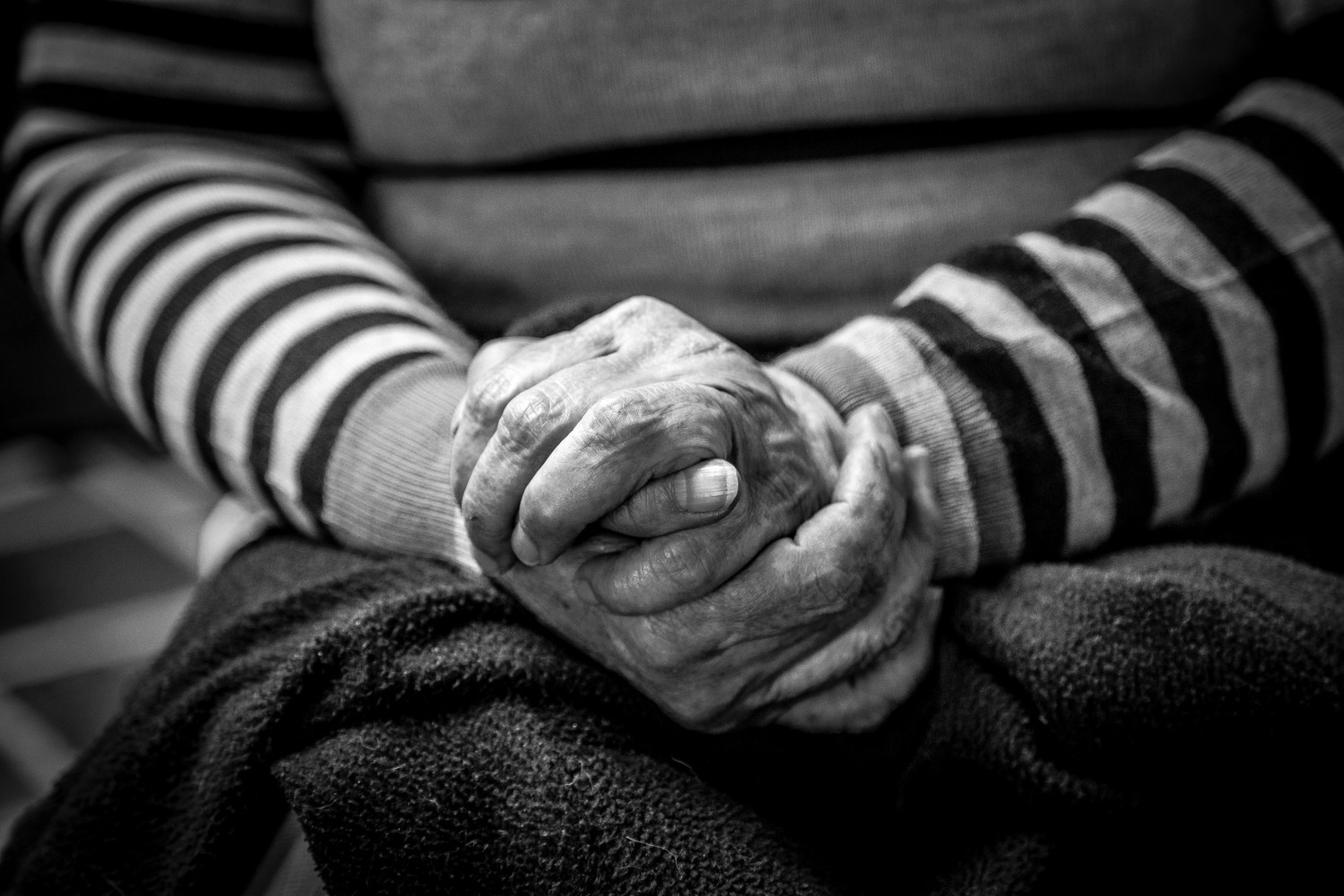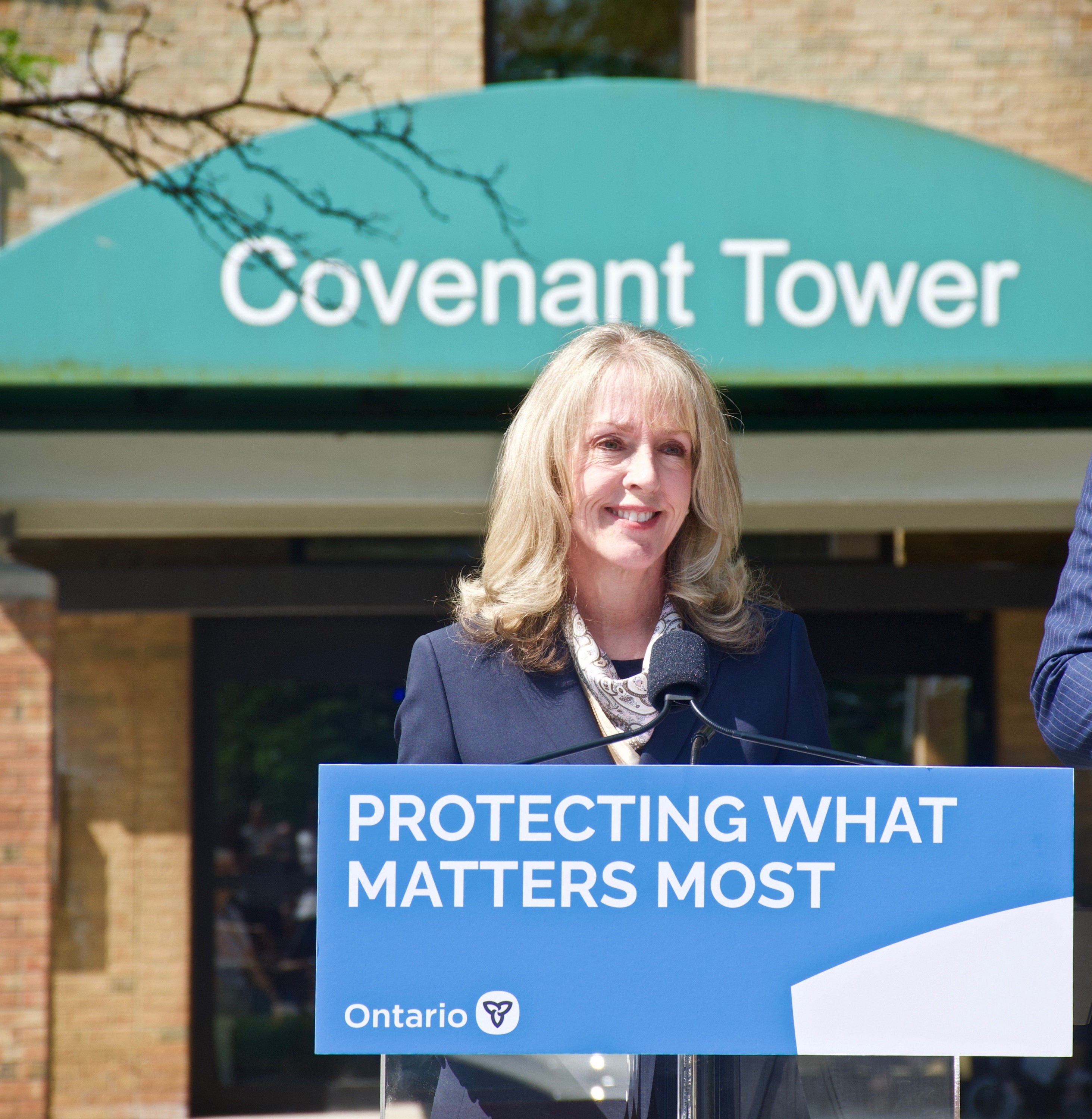
A year into the pandemic, PSWs still moving between high-risk care settings
The directive could not have been more clear: To keep Ontario’s most vulnerable safe, personal support workers can not be allowed to move between long-term care settings, spreading the novel coronavirus from one group of seniors to another.
Ontario Premier Doug Ford issued an emergency order in April preventing employees from working at multiple long-term care facilities. "We're dealing with a wildfire at our long-term care homes right now," Ford said at the time.
A month earlier, at the start of the pandemic, the provincial government had issued official “guidance” for the long-term care and retirement-home sector that "employers should work with employees to limit the number of different work locations that employees are working at, to minimize risk to patients of exposure to COVID-19."
Fast forward to last week and the ongoing problems in the sector, which continues to put Ontario’s most vulnerable residents in dangerous situations that are avoidable.
“Again, here we are, we’re short staffed and you’ve got personal support workers who are in high demand, moving from community to homes, and it’s the opposite of what we should be doing to control this,” union head Sharleen Stewart said.
Despite the warnings, recent reports indicate some agencies are dispatching home-care PSWs into higher-risk environments.
“It’s been extremely inequitable. Poorly managed from the beginning,” said Stewart, president of the SEIU Healthcare union, which represents over 60,000 frontline healthcare workers across Canada, more than 25,000 of which are PSWs.

Sharleen Stewart, president of the SEIU Healthcare union, says many of the same challenges in long-term care observed during the first wave of the pandemic, are still present today.
In April, the provincial government issued a regulation limiting workers to a single long-term care service provider or home, but apparently this does not apply to other care settings. The regulation states that employees of a long-term care provider cannot also attend work in other long-term care homes, by another health service provider, or at another retirement home. However, it does not expressly prohibit work in other care settings, including in developmental services care or home care.
In an email response to The Pointer a spokesperson for the Ontario health ministry did not specify that PSWs are required to only attend one care setting or restrict their work just to home care.
Nearly a year into the pandemic, and despite repeated calls to limit the movement of those workers who can easily transmit the virus to the most vulnerable, the Ford PC government continues to ignore the issue, critics say.
“No, it should not be happening. Right now, PSWs that work in long-term care can only work in long-term care,” said Miranda Ferrier, Ontario Personal Support Workers Association president. The OPSWA has been advocating to regulate the profession for years, and says some of the added protections for PSWs during the pandemic will amount to “Band-Aid fixes” if they are not made permanent.
A lack of PSW staff across the sector continues to put seniors at risk, even with the current vaccine rollout for those in long-term care and other arrangements involving support staff for the elderly.
Stewart said she had spoken to the health and long-term care ministers about concerns related to PSWs staffing last March, pointing to the response from other provinces, including Quebec, which started a campaign in June to hire more than 10,000 PSWs.
In addition to separating long-term care and community PSWs to their respective settings during the pandemic, Stewart said the union advocated for additional infection prevention measures such as “cohorting” staff, including community PSWs in the priority vaccination plan, better wages, and providing adequate PPE.
According to the Peel Public Health pandemic dashboard, 67 percent of deaths due to COVID-19 – or 382 of the Region’s 571 deaths – occurred among long-term care or retirement home residents as of January 31. The median age of deaths is 85. The health unit’s reporting notes that Peel community transmission in November and December led to increased cases in long-term care and retirement settings. Since the January 14 emergency stay-at-home order, new cases of infection in Peel reached a plateau and are beginning to decline, though outbreaks in Peel nursing homes continue to be declared.
Some of the most deadly include an outbreak at Camilla Care Community, in Mississauga, where 188 residents and 55 staff contracted the virus, and 72 residents died. The province temporarily appointed Trillium Health Partners as the manager of the facility in May. The outbreak lasted between March 26 and June 27, though another outbreak was declared on January 14, with six staff contracting the virus as of January 28. By February 1, one more Camilla resident was added to the case count.
A June report by Trillium documented horrific conditions at the home, including poor leadership, a lack of personal protective equipment (PPE), and absence of infection control practises. Understaffing resulted in minimal care provision, with reports of residents left in their soiled clothing or being force-fed to rush to the next client, with meal service sometimes taking up to three hours to complete. Camilla Care is now facing a $25 million class action lawsuit by residents and their families.
In August, the Canadian Armed Forces released what Premier Doug Ford called a “heart-wrenching report” documenting the neglect, understaffing and poor infection control practises seen across seven long-term care facilities they attended to provide emergency support between April and July, including at Brampton’s Grace Manor.
According to the Ministry of Health’s latest guidance document for home and community care, enhanced droplet and contact precautions are required when visiting a patient suspected to have COVID-19. This means wearing gloves, a gown, surgical mask and a face shield or goggles, according to the September 17 document.
In an email to The Pointer, a Ministry of Health spokesperson said care providers are asked to use surgical masks “during the entirety of a home and long-term care visit,” but did not specify whether PSWs were recommended to restrict their work to one setting.
The Ontario Personal Support Workers Association received a complaint in January from a Hamilton family regarding a homecare visit by a PSW who was apparently dispatched to a higher risk setting, said Ferrier.
“If we don't have a solid foundation to grow from, we can’t make those changes in legislation and policies and procedures that will bring about the full-time work, that will bring about a better wage…and it will give them the professional recognition they deserve,” she said.
The Broadbent Institute, a think-tank founded by former federal NDP leader Ed Broadbent, applauded British Columbia’s “swift response” to address the challenges in long-term care that have continued to plague Ontario.
Just prior to the pandemic declaration last March, BC Seniors Advocate Isobel Mackenzie issued a report that found for-profit entities spend $10,000 less per year, per resident, compared to the non-profit long-term care sector. After a devastating COVID-19 outbreak at Lynn Valley care home, where 20 residents died, the government went on a hiring blitz to appropriately allocate staff, place them in one facility to minimize spread, and improve pay and job protections.
Ontario has been slow to respond to some of these successful strategies adopted by other provinces. It prompted a coalition of more than 300 physicians and advocates to form Doctors for Justice in LTC, and release an open letter with nine action items it demands from the government to keep seniors safe.
The group is calling for an end to the use of agency workers in multiple facilities, said Vivian Stamatopoulos, an associate teaching professor at Ontario Tech and a researcher on long-term care outbreaks.
“We need to have properly staffed facilities, and individuals who have full-time, permanent contracts so that they don’t have to take on multiple contract positions – either in home care, or different long-term care facilities – where they, unfortunately, can transmit the virus,” she said. Intimidation tactics, such as threatening workers with professional reprisal for speaking out, and lawsuit threats and trespassing orders against family members, are part of the system that keeps these workers and their families vulnerable, she said.
“This is a very troubled and fractured system that needs to be overhauled.”
Some of these recommendations are reflected in findings by Ontario’s Long-Term Care COVID-19 Commission, which has released two interim reports since its July 2020 launch, and is expected to submit its findings by April 30. (The Commission asked for an extension to December for its report, due to the “significant delays in obtaining government information central to the Commission’s investigation,” but the request was denied by Long-Term Care Minister Merrilee Fullerton.)

Long-Term Care Minister Merrilee Fullerton
The first of five interim recommendations made in late October was to increase staffing of PSWs and ensure that support workers recruited were able to meet the “complex care needs” of residents.
Peel long-term care homes – namely, Erin Mills Lodge Nursing Home and Cooksville Care Centre in Mississauga, and Grace Manor in Brampton – experienced brutal outbreaks during the first wave.
Currently, Extendicare Mississauga is battling an outbreak, declared on December 18, that has killed 11 people of the 46 who contracted the virus, with more than two-dozen staff testing positive for the virus. On December 29, Tullamore Care Community in Brampton also declared an outbreak, where 92 residents and 46 staff were sick, with seven resident deaths. The Peel long-term care outbreaks declared since this January have affected a maximum of seven residents and six staff per home.
The risk of COVID-19 spreading into, and out of, long-term care settings has become more pronounced as Peel announced its first confirmed case of the South African variant of COVID-19 last week. The Mississauga man who contracted the virus had not travelled, Peel Public Health said in a statement. The Region has also identified six cases of the U.K. variant.
An outbreak of this variant at Roberta Place Long Term Care in Barrie has killed 63 residents, about half of the 128 who contracted COVID-19. York Region also confirmed 39 cases of the U.K. variant last week.
Dr. Adalsteinn Brown, co-chair of the Ontario Science Table, said COVID-19 variants are expected to become the dominant version of the virus by March.
Care staff and PSWs in long-term care homes are screened twice daily, including temperature checks, and are required to be tested for the virus every week, said Rob McMahon, a spokesperson for the Ministry of Long-Term Care, in a statement to The Pointer. Rapid COVID-19 tests have been deployed to long-term care homes during the second wave to facilitate the early detection of outbreaks.
Email: [email protected]
Twitter: @LaVjosa
COVID-19 is impacting all Canadians. At a time when vital public information is needed by everyone, The Pointer has taken down our paywall on all stories relating to the pandemic and those of public interest to ensure every resident of Brampton and Mississauga has access to the facts. For those who are able, we encourage you to consider a subscription. This will help us report on important public interest issues the community needs to know about now more than ever. You can register for a 30-day free trial HERE. Thereafter, The Pointer will charge $10 a month and you can cancel any time right on the website. Thank you.
Submit a correction about this story


